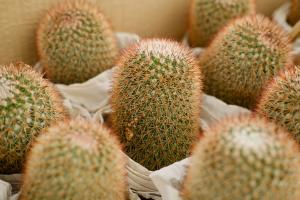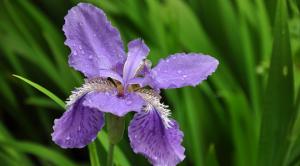Introduction
Water is one of the most important resources when it comes to the growth and development of living plants. Water potential, also known as water potential energy, is the force exerted by water as it moves down a concentration gradient across a semipermeable barrier. It is determined by the concentration of solutes present in water, the pressure exerted on the water, and the effects of gravity. Understanding how to measure water potential is essential for improving agricultural practices, as well as for understanding the basic biology of plants.
Measuring Water Potential Using the Pressure Chamber Method
The pressure chamber method is a widely used technique for measuring water potential in living plant tissues. This method involves placing a sample of the plant tissue into a sealed chamber that is pressurized with a known quantity of air. The pressurized air forces water out of the plant tissue, and the resulting pressure is measured. The pressure at which water begins to emerge from the cut surfaces of the tissue is the water potential. This method allows for quick and relatively accurate measurements of water potential in plant tissues, making it an invaluable tool for researchers and farmers alike.
Measuring Water Potential Using the Psychrometer Method
The psychrometer method involves using two thermometers, one with a wet bulb and one with a dry bulb, to measure the relative humidity of the air surrounding a plant. The two thermometers are placed side by side, and the wet-bulb thermometer is wrapped in a wet piece of cloth. As water evaporates from the cloth, it causes the temperature of the wet-bulb thermometer to drop. By measuring the difference between the temperatures of the wet and dry-bulb thermometers, the relative humidity of the air can be determined. This, in turn, can be used to calculate the water potential of the plant tissue. While this method is not as accurate as the pressure chamber method, it is much simpler and requires only basic equipment.
Importance of Measuring Water Potential in Living Plant Tissues
Measuring water potential in living plant tissues is crucial for understanding how plants cope with environmental stress. Plants that are subjected to drought, high salt concentrations, or other stressors, alter the water potential of their cells to maintain growth and survival. Understanding how plants respond to these stresses and how to measure water potential is vital to understanding plant biology and improving agricultural practices.
Conclusion
Water potential is a critical factor in the growth and development of plants. Understanding how to measure water potential in living plant tissues is vital for understanding how plants cope with environmental stress and improving agricultural practices. Techniques such as the pressure chamber and psychrometer methods are both important tools for researchers and farmers alike, and the development of new methods for measuring water potential will continue to be an important area of research in the future.

 how many times do yo...
how many times do yo... how many planted tre...
how many planted tre... how many pine trees ...
how many pine trees ... how many pecan trees...
how many pecan trees... how many plants comp...
how many plants comp... how many plants can ...
how many plants can ... how many plants and ...
how many plants and ... how many pepper plan...
how many pepper plan...





























